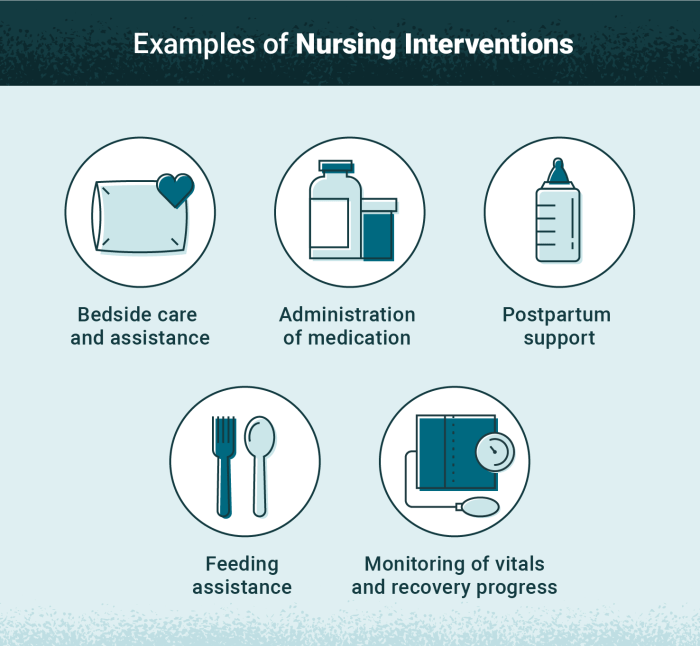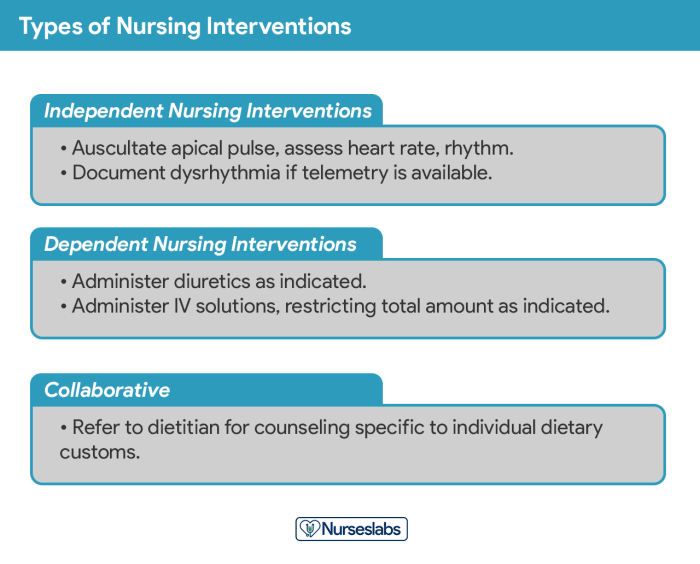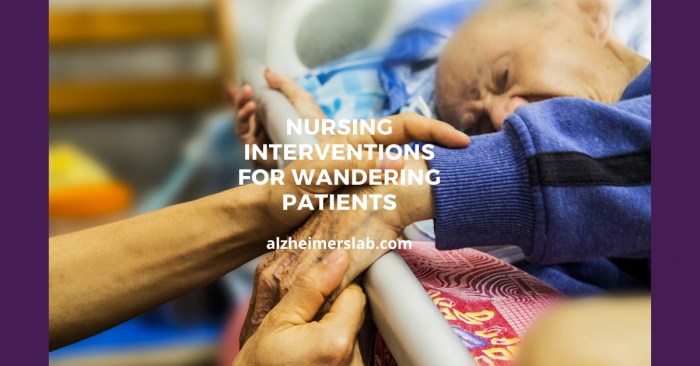Nursing interventions for wandering patients are crucial in ensuring the safety and well-being of individuals prone to this behavior. This comprehensive guide delves into the assessment of risk factors, environmental modifications, behavioral interventions, pharmacological treatments, and education and support strategies to provide a holistic approach to managing wandering.
Wandering behavior is a common concern among patients with dementia, Alzheimer’s disease, and other cognitive impairments. It can pose significant risks to their safety and well-being, making it imperative for healthcare professionals to implement effective interventions.
Patient Assessment

Assessing a patient’s risk for wandering is crucial for implementing appropriate interventions. Factors contributing to wandering behavior include cognitive impairment, sensory deficits, physical limitations, anxiety, and boredom.
Assessment Tools
Assessment tools, such as the Wanderer Assessment Questionnaire (WAQ) and the Dementia Wandering Assessment Scale (DWAS), help identify patients at risk. These tools assess cognitive function, behavioral patterns, and environmental factors that may contribute to wandering.
Environmental Modifications

The environment plays a significant role in preventing wandering. Modifications include:
- Secure exits and windows
- Install motion sensors and alarms
- Provide safe and accessible outdoor areas
- Reduce clutter and create clear pathways
- Use signage and color-coding to orient patients
Technology
Technology, such as GPS tracking devices and wander detection mats, can monitor and prevent wandering. These devices alert staff when patients leave designated areas.
Behavioral Interventions

Behavioral interventions aim to modify wandering behavior by:
- Redirecting patients to safe areas
- Providing structured activities and routines
- Using positive reinforcement for appropriate behavior
- Reducing triggers that may lead to wandering
- Encouraging communication and interaction
Effectiveness, Nursing interventions for wandering patients
Behavioral interventions have been shown to be effective in reducing wandering behavior, particularly when combined with other interventions.
Pharmacological Interventions
Pharmacological interventions may be considered for patients with severe wandering behavior. Medications commonly used include:
- Antipsychotics (e.g., olanzapine, risperidone)
- Antidepressants (e.g., trazodone, mirtazapine)
- Cholinesterase inhibitors (e.g., donepezil, rivastigmine)
Risks and Benefits
Pharmacological interventions carry risks of side effects, such as sedation, confusion, and falls. The benefits and risks must be carefully weighed before prescribing medication.
Education and Support: Nursing Interventions For Wandering Patients

Educating patients and families about wandering behavior is essential for promoting understanding and adherence to interventions.
Resources
Resources for education include:
- Alzheimer’s Association
- National Council on Aging
- American Association of Retired Persons (AARP)
Support Groups
Support groups provide a platform for patients and families to share experiences, learn coping mechanisms, and access resources.
Q&A
What are the common risk factors for wandering behavior?
Risk factors include cognitive impairment, dementia, Alzheimer’s disease, history of wandering, agitation, and disorientation.
How can environmental modifications help prevent wandering?
Environmental modifications include reducing clutter, providing clear pathways, installing alarms, and creating a safe and familiar environment.
What are the principles of behavioral interventions for wandering patients?
Behavioral interventions focus on positive reinforcement, redirection, and providing meaningful activities to engage patients.